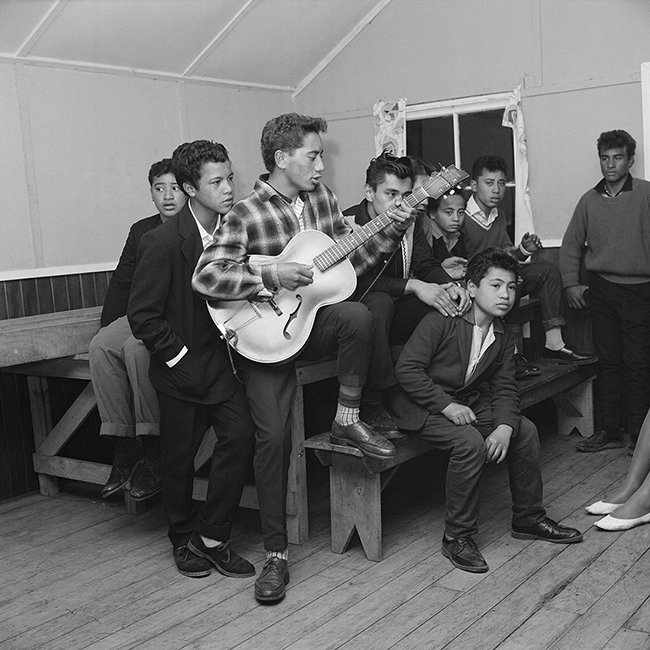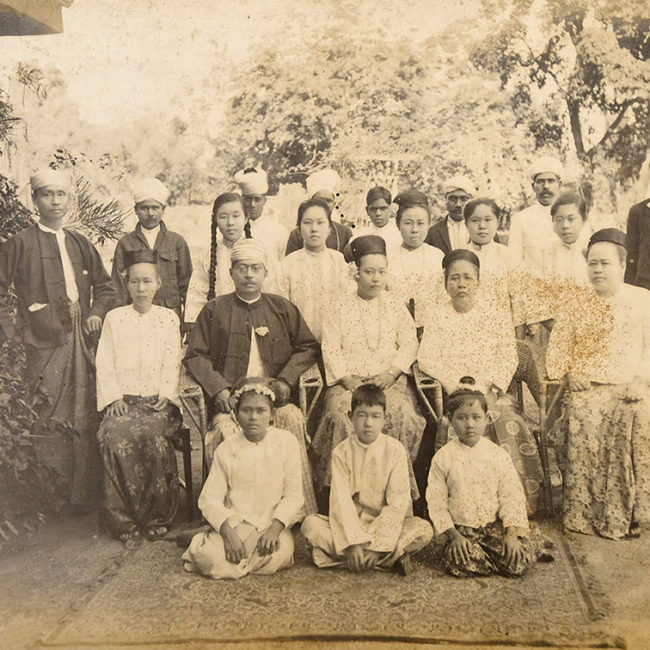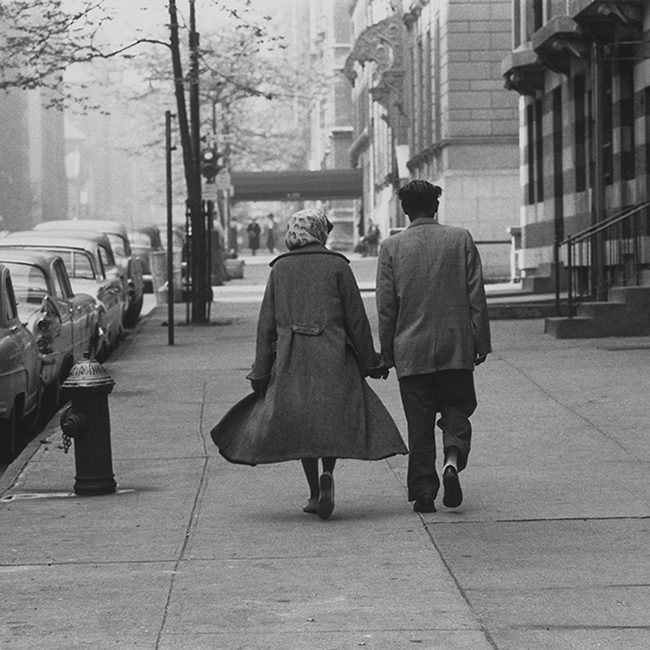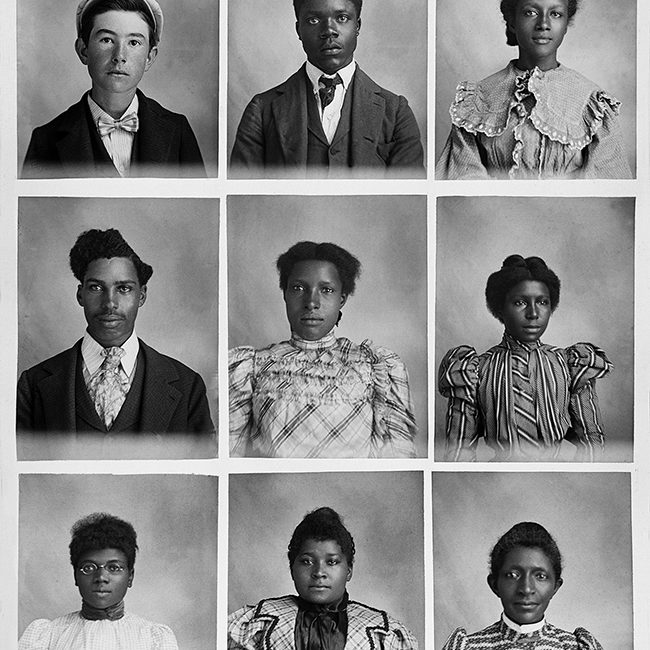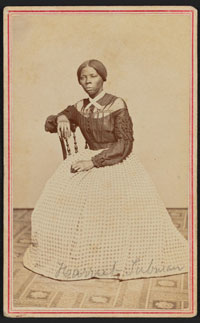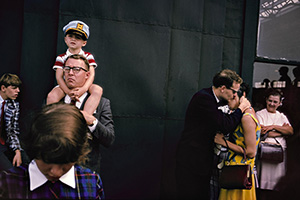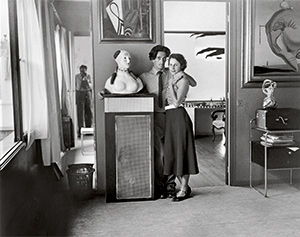“Aunty! African Women in the Frame, 1870 to the Present,” opens at the United Photo Industries Gallery in Dumbo, Brooklyn, on November 15. The exhibition, curated by photographer Laylah Amatullah Barrayn and author Catherine E. McKinley, features original archival, vintage, and contemporary images culled from The McKinley Collection, a repository of rare images from across the African continent, made between the 1870s and the present.
Through more than 100 images, “Aunty!” looks at the duality contained within the idea of the Aunty. An expression of love and affection across most Black world cultures, the term is a recognition of feminine power rooted in indigeneity. Through the lens of colonialism, “Aunty” takes on the myriad of servile roles Black women were historically sequestered to: cook, concubine, nanny, laundress, cloth maker, etc. Here, “Aunty” is also burdened with the violence of colonization.
PDN spoke with McKinley and Barrayn about the exhibition and their goal as curators to look head-on at the beauty of the images as well as the uneasy legacies they recall, and importantly, the moments where those pictured reveal, retell, and reclaim agency.
PDN: What is the origin of the McKinley Collection?
Catherine McKinley: The McKinley Collection is a personal trove. I began collecting informally in the 1990s when I travelled almost yearly to West Africa. Photo studios would paste photos on their outside walls with cassava paste as advertisements. I loved those walls and many photographers would let you take one if you liked. I am a writer and fashion historian and in 2001 I set out on a journey along textile trade routes linking eleven West African nations. Along the way, I dug into stranger’s family albums and studio archives to document how people wore what they wore and what it revealed about trade, love and politics in the era they lived in. That was when I started to think formally of my collection as an archive.
PDN: What was your biggest curatorial challenge while putting together “Aunty!”?
Laylah Amatullah Barrayn: Time and selection. We had a little over a month to pull everything together, and we were both working on multiple projects and traveling. The McKinley Collection has such an array of arresting photographs, it’s easy to get lost looking at just one photograph because so many questions develop around who these women are and what circumstances surrounded the photograph.
PDN: What are you hoping viewers will take away from “Aunty!”?
LAB: I’d like for the viewer to contemplate the role of the photograph as a printed object, as a means of communication (i.e. postcard) and what ideas are being suggested when colonial photographers use images to label and sort African women, and for the viewer to examine their own ideas around African women and identity.
CM: “Aunty” includes images as early as 1870 and as recent as 2013. Curatorially, we are presenting the masters of the African studio and many anonymous or lesser known ones, as a frame to look forward and backward to investigate an evolution of nearly 150 years of photographing of African women. The photographers working from the 1870s through the 1950s-60s (the time of independence) are both African and European. All are male. There are three contemporary female photographers in “Aunty!”: Zina Saro-Wiwa, Fatoumatou Diabate and Patricia Coffie. All are working post-2005. I hope the viewer leaves contemplating the ways in which utter beauty and also the very problematic, sometimes truly disturbing aspects of representation often live side my side.
PDN: Can you say a little more about the duality behind the idea and figure of the Aunty?
CM: For many Black women “Aunty” is double edged. The conferring of status, and playfulness, the lovingness, even at times when it is spoken by strangers, is always mediated by the fact of its colonial history. And the gender expectations attached to the name have their own violence. There is a lot colliding in that moment when the name is called. It is similar to the photographs–collisions of beauty, joy, the tragic-comic, the celebratory, the outright coercive.
PDN: This exhibition speaks to counter narratives and reclaiming agency, but also acknowledging power. Are there one or two images that you think do this particularly well?
LAB: There are so many examples. I’d like to highlight Fatoumata Diabate, a female photographer from Mali, who is also featured in my book, MFON: Women Photographers of the African Diaspora. Fatoumata works across genres, including reportage, but her conceptual work is very imaginative and powerful. When we think of African photographers, we think of the masters, both from Mali, Seydou Keïta and Malick Sidibe, but Fatoumata is one of the few female photographers from Mali adding to the contemporary conversation on photography in a significant way. Her presence is very empowering for women and for changing the narrative of African imagery which is often skewed by the Western gaze.
CM: Thabiso Sekgala’s photo–it is so strong in terms of her gaze and stance, and is also of a woman who is the granddaughter of a survivor of the first genocide of the 20th century–the German-Herero War in 1904 in which 80% of the Namibian population was decimated. She is at a party for a senior member of the Ovaherero Genocide Committee and is wearing a modern version of dress enforced by missionaries with Victorian and Edwardian “bones,” which has ironically been revived as an expression of indigineity (the hat and girth of 8 petticoats have been adapted to mimic the sacred cow) and resistance to the genocide (Herero men still wear old German soldiers uniforms to embody and contain the power of the aggressor and symbolize dominance). I also have a personal attachment to the photo because Thabiso, who was a township boy and then a manger at a KFC in Johannesburg and at night a peer of Pieter Hugo, Michael Subotzky, etc. shot it for me on commission for a writing project. He committed suicide within a year, just as his big show at Goodman Gallery was being hanged.
-Sarah Stacke
“Aunty! African Women in the Frame, 1870 to the Present”
Curated from the McKinley Collection by Catherine E. McKinley and Laylah Amatullah Barrayn
United Photo Industries Gallery
November 15, 2018 – January 31, 2019
Opening reception Thursday, January 15 from 6-9pm (RSVP)
Related Articles
An Interracial African Family Album, Real and Imagined
A Buried Colonial-Era African Choir, Revived in Images and Sound
Reimagining Sanlé Sory’s Portrait Studio
